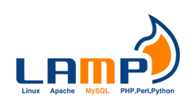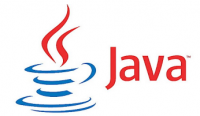Full Stacks (Software Bundles)
Software development solution stacks and bundles.

- MEAN
- LAMP
- RUBY
- PYTON
- IOS
- .NET
- LYME
- JAVA/Android
- …
Links
MEAN
- MongoDB, a NoSQL database
- Express.js, a web application framework that runs on Node.js
- Angular.js, a JavaScript MVC framework that runs in browser JavaScript engines
- Node.js, an execution environment for event-driven server-side and networking applications
Used By:
- Google
- PayPal
- NetFlix
- Snippet from Wikipedia: MEAN (solution stack)
MEAN (MongoDB, Express.js, AngularJS (or Angular), and Node.js) is a source-available JavaScript software stack for building dynamic web sites and web applications. A variation known as MERN replaces Angular with React.js front-end, and another named MEVN use Vue.js as front-end.
Because all components of the MEAN stack support programs that are written in JavaScript, MEAN applications can be written in one language for both server-side and client-side execution environments.
Though often compared directly to other popular web development stacks such as the LAMP stack, the components of the MEAN stack are higher-level including a web application presentation layer and not including an operating system layer.
The acronym MEAN was coined by Valeri Karpov. He introduced the term in a 2013 blog post and the logo concept, initially created by Austin Anderson for the original MEAN stack LinkedIn group, is an assembly of the first letter of each component of the MEAN acronym.
LAMP
- Linux
- Apache
- MySQL
- PHP
Used by:
- Yahoo
- Wikipedia
- Facebook
- Snippet from Wikipedia: LAMP (software bundle)
A LAMP (Linux, Apache, MySQL, Perl/PHP/Python) is one of the most common software stacks for the web's most popular applications. Its generic software stack model has largely interchangeable components.
Each letter in the acronym stands for one of its four open-source building blocks:
- Linux for the operating system
- Apache HTTP Server
- Maria DB or MySQL for the relational database management system
- Perl, PHP, or Python for the programming language
The components of the LAMP stack are present in the software repositories of most Linux distributions.
Ruby
- Ruby
- Rails
- RSpec
- Capybara
- PostgreSQL
Used by:
- Grupon
- Twitter
- Hulu
- Snippet from Wikipedia: Ruby on Rails
Ruby on Rails (simplified as Rails) is a server-side web application framework written in Ruby under the MIT License. Rails is a model–view–controller (MVC) framework, providing default structures for a database, a web service, and web pages. It encourages and facilitates the use of web standards such as JSON or XML for data transfer and HTML, CSS and JavaScript for user interfacing. In addition to MVC, Rails emphasizes the use of other well-known software engineering patterns and paradigms, including convention over configuration (CoC), don't repeat yourself (DRY), and the active record pattern.
Ruby on Rails' emergence in 2005 greatly influenced web app development, through innovative features such as seamless database table creations, migrations, and scaffolding of views to enable rapid application development. Ruby on Rails' influence on other web frameworks remains apparent today, with many frameworks in other languages borrowing its ideas, including Django in Python; Catalyst in Perl; Laravel, CakePHP and Yii in PHP; Grails in Groovy; Phoenix in Elixir; Play in Scala; and Sails.js in Node.js.
Well-known sites that use Ruby on Rails include Airbnb, Archive of Our Own, Crunchbase, Dribbble, GitHub, Twitch and Shopify.
Python
iOS
- Swift
- XCode
- iOS, Mac OS
Used by:
- Apple
- Snippet from Wikipedia: Swift (programming language)
Swift is a high-level general-purpose, multi-paradigm, compiled programming language created by Chris Lattner in 2010 for Apple Inc. and maintained by the open-source community. Swift compiles to machine code and uses an LLVM-based compiler. Swift was first released in June 2014 and the Swift toolchain has shipped in Xcode since Xcode version 6, released in September 2014.
Apple intended Swift to support many core concepts associated with Objective-C, notably dynamic dispatch, widespread late binding, extensible programming, and similar features, but in a "safer" way, making it easier to catch software bugs; Swift has features addressing some common programming errors like null pointer dereferencing and provides syntactic sugar to help avoid the pyramid of doom. Swift supports the concept of protocol extensibility, an extensibility system that can be applied to types, structs and classes, which Apple promotes as a real change in programming paradigms they term "protocol-oriented programming" (similar to traits and type classes).
Swift was introduced at Apple's 2014 Worldwide Developers Conference (WWDC). It underwent an upgrade to version 1.2 during 2014 and a major upgrade to Swift 2 at WWDC 2015. It was initially a proprietary language, but version 2.2 was made open-source software under the Apache License 2.0 on December 3, 2015, for Apple's platforms and Linux.
.NET
- C#, ASP, VB, F#, LINQ, …
- Visual Studio
- IIS
- SQL Server
- Xamarin
Used by:
- Microsoft
- Snippet from Wikipedia: .NET Framework
The .NET Framework (pronounced as "dot net") is a proprietary software framework developed by Microsoft that runs primarily on Microsoft Windows. It was the predominant implementation of the Common Language Infrastructure (CLI) until being superseded by the cross-platform .NET project. It includes a large class library called Framework Class Library (FCL) and provides language interoperability (each language can use code written in other languages) across several programming languages. Programs written for .NET Framework execute in a software environment (in contrast to a hardware environment) named the Common Language Runtime (CLR). The CLR is an application virtual machine that provides services such as security, memory management, and exception handling. As such, computer code written using .NET Framework is called "managed code". FCL and CLR together constitute the .NET Framework.
FCL provides the user interface, data access, database connectivity, cryptography, web application development, numeric algorithms, and network communications. Programmers produce software by combining their source code with the .NET Framework and other libraries. The framework is intended to be used by most new applications created for the Windows platform. Microsoft also produces an integrated development environment for .NET software called Visual Studio.
.NET Framework began as proprietary software, although the firm worked to standardize the software stack almost immediately, even before its first release. Despite the standardization efforts, developers, mainly those in the free and open-source software communities, expressed their unease with the selected terms and the prospects of any free and open-source implementation, especially regarding software patents. Since then, Microsoft has changed .NET development to more closely follow a contemporary model of a community-developed software project, including issuing an update to its patent promising to address the concerns.
In April 2019, Microsoft released .NET Framework 4.8, the last major version of the framework as a proprietary offering, followed by .NET Framework 4.8.1 in August 2022. Only monthly security and reliability bug fixes to that version have been released since then. No further changes to that version are planned. The .NET Framework will continue to be included with future releases of Windows and continue to receive security updates, with no plans to remove it as of September 2024.
Java
- Java
- Eclipse
- Oracle
Used by:
- Oracle
- Android
- Snippet from Wikipedia: Java (programming language)
Java is a high-level, general-purpose, memory-safe, object-oriented programming language. It is intended to let programmers write once, run anywhere (WORA), meaning that compiled Java code can run on all platforms that support Java without the need to recompile. Java applications are typically compiled to bytecode that can run on any Java virtual machine (JVM) regardless of the underlying computer architecture. The syntax of Java is similar to C and C++, but has fewer low-level facilities than either of them. The Java runtime provides dynamic capabilities (such as reflection and runtime code modification) that are typically not available in traditional compiled languages.
Java gained popularity shortly after its release, and has been a popular programming language since then. Java was the third most popular programming language in 2022 according to GitHub. Although still widely popular, there has been a gradual decline in use of Java in recent years with other languages using JVM gaining popularity.
Java was designed by James Gosling at Sun Microsystems. It was released in May 1995 as a core component of Sun's Java platform. The original and reference implementation Java compilers, virtual machines, and class libraries were released by Sun under proprietary licenses. As of May 2007, in compliance with the specifications of the Java Community Process, Sun had relicensed most of its Java technologies under the GPL-2.0-only license. Oracle, which bought Sun in 2010, offers its own HotSpot Java Virtual Machine. However, the official reference implementation is the OpenJDK JVM, which is open-source software used by most developers and is the default JVM for almost all Linux distributions.
Java 24 is the version current as of March 2025. Java 8, 11, 17, and 21 are long-term support versions still under maintenance.
Other
- ELK – Elasticsearch, Logstash, Kibana – via Logz.io
## ToDo ##
- Support Us... →
- MEAN Stack:
- MongoDB (Database)
- Express.js (Backend Framework)
- Angular (Frontend Framework)
- Node.js (Runtime Environment)
- MERN Stack:
- MongoDB (Database)
- Express.js (Backend Framework)
- React (Frontend Library)
- Node.js (Runtime Environment)
- LAMP Stack:
- Linux (Operating System)
- Apache (Web Server)
- MySQL (Database)
- PHP (Server-side Scripting Language)
- WAMP Stack:
- Windows (Operating System)
- Apache (Web Server)
- MySQL (Database)
- PHP (Server-side Scripting Language)
- Django Stack:
- Django (Backend Framework)
- Python (Programming Language)
- Various frontend technologies can be used alongside Django.
- Ruby on Rails Stack:
- Ruby on Rails (Backend Framework)
- Ruby (Programming Language)
- Various frontend technologies can be used alongside Rails.
- Laravel Stack:
- Laravel (Backend Framework, PHP)
- PHP (Programming Language)
- Various frontend technologies can be used alongside Laravel.
- Vue.js Stack:
- Vue.js (Frontend Framework)
- Various backend technologies can be used alongside Vue.js.
- Spring Boot Stack:
- Spring Boot (Backend Framework, Java)
- Java (Programming Language)
- Various frontend technologies can be used alongside Spring Boot.
- Meteor Stack:
- Meteor (Full Stack Framework)
- MongoDB (Database)
- Node.js (Runtime Environment)
- Various frontend technologies can be used alongside Meteor.
- Flask Stack:
- Flask (Backend Framework, Python)
- Python (Programming Language)
- Various frontend technologies can be used alongside Flask.
- Ember.js Stack:
- Ember.js (Frontend Framework)
- Various backend technologies can be used alongside Ember.js.






